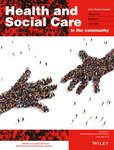“I see so much in them”: Australian Chaplains telling an alternative narrative of adolescents in the justice system
Abstract
This qualitative study aims to provide insight into the impact of chaplaincy in the Australian juvenile justice system. Semi-structured qualitative interviews were conducted with six chaplains and managers of chaplaincy services in the juvenile justice system in Victoria, Australia. Interviews were analysed thematically using deductive and inductive coding. Four themes emerged relating to the role and impact of the chaplain: to establish a safe and trusting relationship with the adolescents, to convey love and belonging, to engage the adolescents in meaning making, and to help adolescents to realise their full potential. These themes are consistent with Maslow's Hierarchy of Needs. Two themes emerged regarding how to increase the reach of chaplaincy: through recognising chaplaincy as an integral part of the justice system and enabling chaplains to work with the adolescents and their families post-release. While limited by a small sample, this study represents all organisations that provide chaplaincy in the juvenile justice system in Victoria, Australia. Future research could include the voices of the adolescents in juvenile justice, to gain their perspective on the role and impact of chaplaincy services.
CONFLICT OF INTEREST
The authors have no conflicts of interest to disclose.




